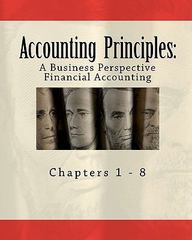Question
1. Suppose there are only two goods in the economy: Yo-yos and Marbles. Bob only cares about his consumption of Yo-yos; the more Yo-yos he
1. Suppose there are only two goods in the economy: Yo-yos and Marbles. Bob only cares about his consumption of Yo-yos; the more Yo-yos he has the happier he is, regardless of his consumption of Marbles. In contrast, Lucy only cares about his consumption of Marbles; the more Marbles she has the happier she is, regardless of her consumption of Yo-yos.
(a) Draw Bob's indifference curves, putting Yo-yos in the x-axis and Marbles in the y-axis.
(b) Draw Lucy's indifference curves, putting Yo-yos in the x-axis and Marbles in the y-axis. (
c) Do Bob's and Lucy's preferences comply with the property of diminishing marginal rate of substitution?
(d) Are Bob's and Lucy's preferences transitive?
Question 2
Matt considers Butter (B) and Sour Cream (S) as substitutes. His utility function has the form u(B, S) = B + S, where > 0. Suppose the price of Butter is PB = 3, the price of Sour Cream is PS = 2, and Matt has an income of M = 100 dollars to spend between Butter and Sour Cream.
(a) In a well labelled diagram, draw Matt's indifference map, putting Butter in the x-axis and Sour Cream in the y-axis. Make sure to indicate the direction at which the indiffference curves increase.
(b) In a well labelled diagram, draw Matt's budget set indicating the intercepts with the axes and the slope of the budget line.
(c) Obtain the Marginal Rate of Substitution between Butter and Sour Cream. What would happen to the MRS if Matt doubles his consumption of Butter and Sour Cream?
(d) Obtain Matt's optimal bundle when: - > 3/2 ; - < 3/2 ; - = 3/2
(e) Now, suppose that the price of butter changes, whereas the price of the sour cream and Matt's income remain the same. The new price of Butter is P B = PB. What is the new Matt's optimal bundle? Does it depend on the value of ?
Question 3 Lucy consumes only scoops of ice-cream (x) and cones (y). Moreover, she insists on consuming these two goods in the combination of 1 scoop of ice-cream and 1 cone. If there are more scoops of ice-cream than cones, she throws the extra ice-cream away. If there are more cones than scoops of ice-cream, she throws the extra cones away. Her utility function of ice-cream and cones is given by U(x, y) = min {x, y} .
(The function min {x, y} returns the smaller number between x and y. In other words, if x < y, min {x, y} = x; if x > y, min {x, y} = y; and if x = y, min {x, y} = x = y.)
(a) Draw a couple of indifference curves for Lucy. Put ice-cream on the horizontal axis. (Hint: Draw the 45 line. Choose a point on the line. If you increase the amount of x but not y from that point, how would Lucy's utility change? If you increase the amount of y but not x from that point, how would Lucy's utility change?)
(b) Suppose each scoop of ice-cream costs $2, and each cone costs $1. Lucy has an income of $6. Draw her budget line in the diagram you have drawn in part (a).
(c) Using the diagram you have drawn, find Lucy's utility maximising consumption bundle. Lucy's sister, Mary, also insists on a particular combination of ice-cream and cones. Unlike Lucy, however, Mary must have 2 scoops of ice-cream with every cone. Mary's utility function is given by
U(x, y) = min { x/2 , y} .
(d) In a separate diagram, draw a couple indifference curves for Mary. (Hint: Instead of drawing the 45 line, draw the line y = x/2. Then follow the procedures as in part (a).)
e) Mary faces the same prices as Lucy, but has an income of $10 instead. Using the diagram you have drawn in part (d), find Mary's utility maximising consumption bundle.
Step by Step Solution
There are 3 Steps involved in it
Step: 1

Get Instant Access to Expert-Tailored Solutions
See step-by-step solutions with expert insights and AI powered tools for academic success
Step: 2

Step: 3

Ace Your Homework with AI
Get the answers you need in no time with our AI-driven, step-by-step assistance
Get Started


